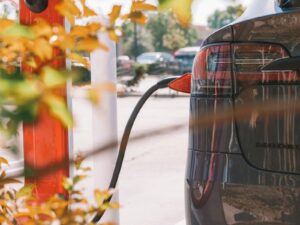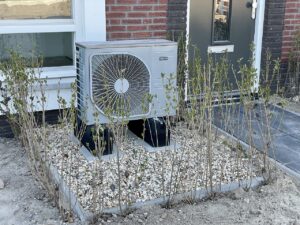As a traveler journeying through the vast landscapes of Texas in a Tesla, the question of where to charge your electric vehicle (EV) is crucial. Texas, known for its sprawling cities, historic landmarks, and scenic routes, is increasingly accommodating EVs, especially cars like Tesla. Here’s your comprehensive guide to finding Tesla charging stations across the Lone Star State.
 Tesla Superchargers: Your Primary Option
Tesla Superchargers: Your Primary Option
Tesla’s network of Superchargers is the most efficient and convenient charging solution for Tesla owners. Superchargers, strategically located along major highways and in metropolitan areas, offer rapid charging that can add up to 200 miles of range in just 15 minutes. These stations are designed for long-distance travel, ensuring you can traverse Texas’s extensive road network with ease.
Finding Superchargers:
- Tesla’s In-Car Navigation: Your Tesla’s onboard navigation system is the most straightforward method to locate Superchargers. Simply enter your destination, and the system will suggest the best route with necessary charging stops.
- Tesla App: The Tesla mobile app not only locates Superchargers but also provides real-time availability information, so you know if charging stalls are available before you arrive.
- Online Maps and Websites: Websites like PlugShare or the official Tesla website offer maps that show all available Tesla charging locations.
Destination Charging: For Longer Stays
Destination Chargers are another Tesla-provided option, found at hotels, restaurants, and shopping centers. These chargers are ideal for topping up your Tesla’s battery while you enjoy local attractions, dine, or overnight in a city. Though slower than Superchargers, they offer the convenience of charging while parked.
Third-Party Charging Stations
In addition to Tesla’s own network, numerous third-party charging stations compatible with Teslas are scattered throughout Texas. These include networks like ChargePoint, EVgo, and Blink. While these chargers might require an adapter for your Tesla, they significantly expand your charging options.
Finding Third-Party Chargers:
- EV-specific Apps: Apps like PlugShare and ChargePoint provide comprehensive maps of EV charging stations, including those compatible with Tesla vehicles.
- Cross-Referencing with Tesla’s Adapters: Ensure you carry a Tesla CHAdeMO adapter, as many third-party fast chargers use the CHAdeMO standard.
Tips for an Uninterrupted Journey
- Plan Ahead: Before embarking, plot your route and charging stops. Consider backup options in case your preferred charging station is occupied.
- Check Charging Station Status: Use apps to check the status of charging stations en route to avoid any occupied or out-of-service chargers.
- Optimize Charging Time: Plan meal breaks or sightseeing around your charging stops to make the most of the charging time.
- Stay Informed: Keep an eye on any updates regarding new charging stations or changes in the existing network.
Embracing the Texas EV Experience
As Texas continues to expand its EV infrastructure, traveling with a Tesla is becoming more convenient. With the right tools and a bit of planning, you can enjoy a smooth, worry-free journey through this dynamic and diverse state. So charge up, hit the road, and experience all the beauty and adventure Texas has to offer.
The ownership of electric vehicles in Texas has seen a decline from 2021 to 2023, according to recent research by the University of Houston and Texas Southern University. This downturn is attributed to concerns over limited charging facilities and the high cost of electric vehicles. Despite this, there’s a growing acceptance for electric vehicles both in Texas and across the country.
The survey indicates a drop in electric vehicle ownership in Texas, with only 5.1% of participants owning one, down from 8% in 2021. However, there’s a slight shift in attitude towards purchasing electric vehicles, with 60% expressing reluctance, a decrease from 63% in the previous year.
A significant barrier to electric vehicle adoption is the scarcity of charging stations. Texas boasts over 12,000 gasoline pumps but has around 2,900 electric vehicle charging stations. This disparity is particularly challenging in rural areas where charging stations are rare.
Pablo Pinto, the director of the Center for Public Policy at the University of Houston, observed variations in electric vehicle acceptance based on factors like ethnicity, income, political beliefs, and age. Higher-income households, earning $80,000 or more, showed a greater interest in electric vehicles, with nearly 40% considering a future purchase. Millennials and Generation Z participants also demonstrated a higher likelihood of considering electric vehicles compared to older demographics.
Pinto highlighted the need for more affordable electric vehicles, suggesting they should match the price of gasoline vehicles and be supported by public rebates. Enhancing charging infrastructure and extending the driving range per charge are also essential to boost consumer interest in electric vehicles. This shift could significantly reduce environmental impacts, especially considering that transportation contributes to 29% of greenhouse gas emissions nationally, and an even higher 47% in the Houston area.
However, the Texas government has recently increased the cost burden on electric vehicle buyers. The latest legislative session introduced a new $200 tax for new electric vehicle owners and a $400 registration fee, aimed at compensating for lost gasoline tax revenues.
In response to the infrastructure challenge, the Texas Department of Transportation (TxDOT) proposed a plan in 2022 to install electric charging stations every 50 to 70 miles. The timeline for this project remains unspecified.

 Heat pumps work by transferring heat from outside to inside a home (or vice versa), providing both heating and cooling options. This versatility makes them particularly suitable for Texas’s varied climate, which can fluctuate from hot summers to chilly winters. The efficiency of heat pumps comes from their use of electricity to move heat rather than generate it, making them more energy-efficient and environmentally friendly compared to conventional HVAC systems.
Heat pumps work by transferring heat from outside to inside a home (or vice versa), providing both heating and cooling options. This versatility makes them particularly suitable for Texas’s varied climate, which can fluctuate from hot summers to chilly winters. The efficiency of heat pumps comes from their use of electricity to move heat rather than generate it, making them more energy-efficient and environmentally friendly compared to conventional HVAC systems.